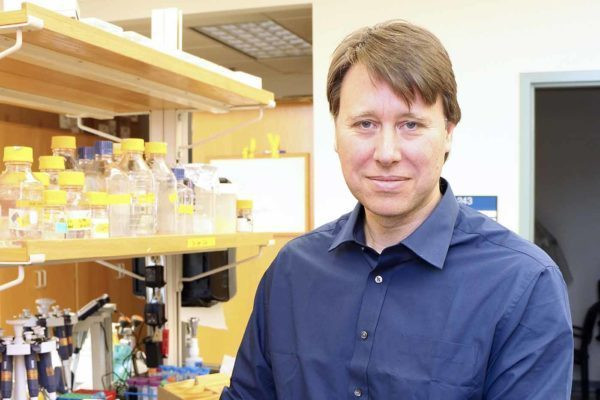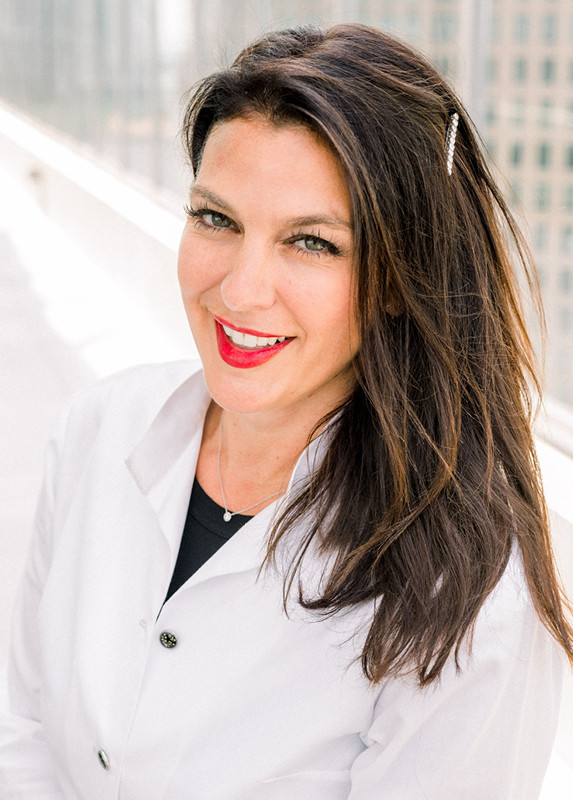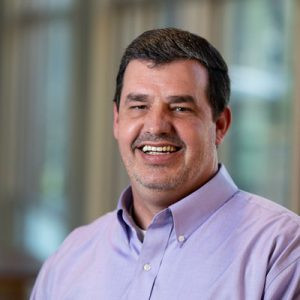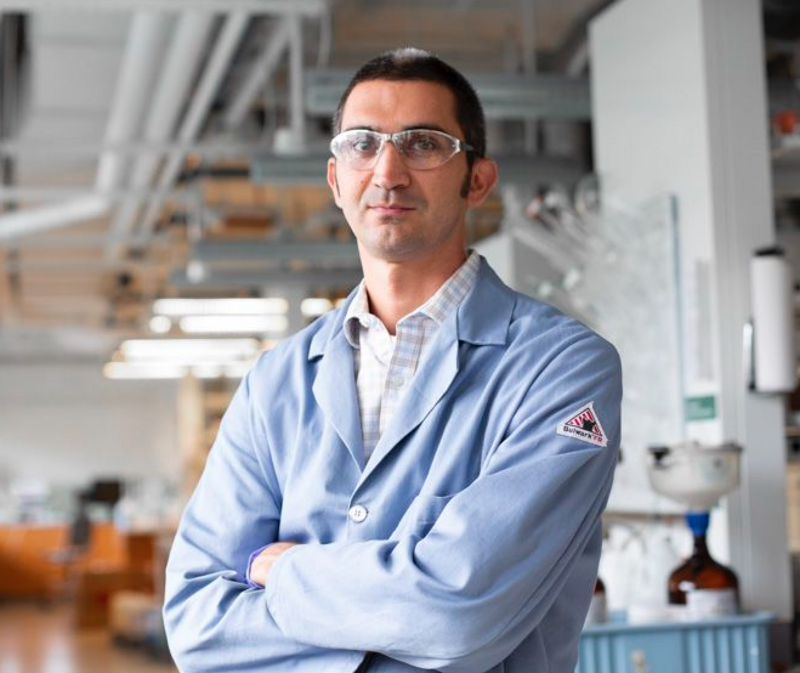An esteemed class of entrepreneurial scientists
GRA Distinguished Investigators are recruited to Georgia’s research universities to advance exploration in a wide range of fields. Translating their discoveries is a priority: The Investigators aim to bring their work to the world through licenses and startup companies.
David Bertioli
University of Georgia
Plant Genetics
David Bertioli is one of the world’s top experts on the genetics of the peanut plant. In 2019, Bertioli was the lead author of a groundbreaking study that mapped the entire genome of the modern, cultivated peanut, sequencing 2.5 billion base pairs of DNA.
 Beyond this feat, Bertioli has extensively studied the modern peanut’s relatives: wild peanut strains and ancestor species. His exploration of wild strains led him to identify the genes that control factors such as resistance to fungal diseases, leaf spot and rust, and root parasites.
Beyond this feat, Bertioli has extensively studied the modern peanut’s relatives: wild peanut strains and ancestor species. His exploration of wild strains led him to identify the genes that control factors such as resistance to fungal diseases, leaf spot and rust, and root parasites.
Both areas of study are providing essential tools for improving peanut crop yields, an area of great interest to Georgia’s $600 million peanut industry. Armed with the knowledge of the peanut’s DNA, peanut breeders – including Bertioli and his colleagues – are now better equipped to introduce the beneficial genes of wild species into the modern peanut plant.
Wild peanut species also have genes that promote larger crop yields or traits like larger peanuts or peanuts better able to withstand drought. While Bertioli is particularly focused on improving the peanut plant’s resistance to pests and diseases, his lab’s work with wild species can enhance the peanut crop in many other ways, too.
The Bertioli lab is introducing the beneficial traits of wild peanut species to the modern cultivated plant through traditional plant breeding techniques — such as controlled hybridization, chromosome doubling, and selection over multiple generations — alongside genetic analysis that draws on their knowledge of peanut DNA.
Bertioli’s work to develop more disease-resistant and pest-resistant peanut cultivars will benefit the environment as well as Georgia farmers, who grow about half the United States’ total peanut crop. And Bertioli’s international research collaborations in Brazil, Senegal, Australia and Uganda are improving the lives of millions of people around the world who depend on the peanut as a source of protein and nutrition.
Visit the Bertioli Lab at UGA >
Louise Hecker
Emory University
Regenerative Biology
Louise Hecker’s research focuses on regenerative biology and investigating mechanisms of tissue injury-repair.
 In 2009, Hecker and her colleagues published a breakthrough paper in which they identified the critical role that an enzyme that generates oxidants plays in the formation of scar tissue in the lung.
In 2009, Hecker and her colleagues published a breakthrough paper in which they identified the critical role that an enzyme that generates oxidants plays in the formation of scar tissue in the lung.
Age, genetics, environmental factors or disease can lead to the build-up of scar tissue in organs. For example, a heart attack can cause scar tissue to form in the heart; the same with cirrhosis in the liver. This accumulation of scar tissue, fibrosis, can become chronic and continue to accumulate.
Progressive fibrosis can be fatal, especially as aging slows down the body’s repair mechanisms. Nearly half of deaths in the U.S. each year are attributed to fibrotic disorders, though the official cause of death might be “organ failure.”
Oxidative stress plays a key part in fibrosis — just as oxidation could be a problem if a car rusts, too much oxidation can lead to scar tissue in our organs. Building on her 2009 Nature Medicine paper, Hecker has worked to better understand how the oxidant-generating enzyme NADPH oxidase-4 (or Nox4) leads to fibrosis in different organs. She is also exploring ways to shut off the enzyme with drugs to disrupt the progressive process of tissue injury.
Hecker’s lab has already identified promising drug molecules that can target Nox4 in pulmonary, cardiac and skin fibrosis. Her startup company, Fibronox, is looking to apply this research to produce viable therapies for humans.
Regenerative biology and tissue engineering first caught Hecker’s attention as a student. Some of her early research focused on cardiac regeneration in amphibians. Since then, she has studied how different animals regenerate tissue in different organs, from lungs to skin. This has provided her with broad knowledge of all the different processes and mechanisms involved in tissue repair.
Stopping the process of oxidation and, therefore, the progression of fibrosis is Hecker’s objective. Eventually, she wants to tackle the next frontier in regenerative biology: providing a way to reverse scar tissue damage, whether from disease or aging.
Rui Kong
Emory University
Virology and Immunology
As a talented early-career virologist, Rui Kong has already made impressive contributions to the field of HIV research by identifying a potential new target for an HIV-1 vaccine.
 While scientists have made great strides in developing treatments for HIV-1 – the most common form of the virus – designing a successful vaccine has proved challenging due to the wide variation in viral strains. A successful vaccine will need to target a piece of the virus that’s similar across strains, eliciting “cross-reactive” antibodies to fight them all. That’s been a tough target to find.
While scientists have made great strides in developing treatments for HIV-1 – the most common form of the virus – designing a successful vaccine has proved challenging due to the wide variation in viral strains. A successful vaccine will need to target a piece of the virus that’s similar across strains, eliciting “cross-reactive” antibodies to fight them all. That’s been a tough target to find.
Through his work at the NIH Vaccine Research Center, Kong helped identify the fusion peptide as a vulnerable site on HIV-1. The fusion peptide is a string of amino acids the virus uses to enter cells, making it an essential and critical piece of its machinery. It is similar across many diverse strains of HIV-1, and Kong and his colleagues discovered the immune system can develop cross-reactive antibodies toward the fusion peptide.
Building on their identification of the fusion peptide as a vaccine target, Kong and his team are developing a novel vaccination strategy that uses sequential immunization, a kind of double-shot approach to boost the immune response.
The first shot would target a variety of HIV-1 fusion peptide sequences, covering most known strains of the virus. The second shot would target something that encases the virus – an “envelope glycoprotein” that helps HIV enter cells (and also holds the fusion peptide). Kong believes that the first shot will prepare the immune system for developing a more focused immune response to the entire glycoprotein.
What’s significant about this approach is that even if the envelope glycoprotein of a particular strain of HIV-1 looks different from the one in the vaccine, the immune system will still know to attack it – as long as the fusion peptide is the same or similar.
Preliminary testing of Kong’s sequential immunization approach in animals – including mice, guinea pigs and non-human primates – has shown promising results.
Since launching his lab in 2020 at the Emory Vaccine Center, Kong has focused on expanding his investigation of the fusion peptide and developing more novel methods to target it. Eventually, these strategies could prove effective against other diseases, particularly those with diverse strains and limited potential targets, like influenza.
More about Rui Kong >
Lance Wells
University of Georgia
Glycobiology
Lance Wells is an analytical biochemist who conducts fundamental research on the molecular causes of disease.
 Inside UGA’s acclaimed Complex Carbohydrate Research Center, Wells and his team investigate how structural changes to proteins — the building blocks of the human body — play a role in diseases such as diabetes, cancer, Alzheimer’s and congenital muscular dystrophy. By shedding light on the molecular mechanisms that cause these conditions, Wells’ research could lead to better treatments.
Inside UGA’s acclaimed Complex Carbohydrate Research Center, Wells and his team investigate how structural changes to proteins — the building blocks of the human body — play a role in diseases such as diabetes, cancer, Alzheimer’s and congenital muscular dystrophy. By shedding light on the molecular mechanisms that cause these conditions, Wells’ research could lead to better treatments.
Wells’s work is especially focused on what happens when sugar molecules attach themselves to proteins; this process is called glycosylation and produces a structure called an O-glycan. Researchers have found that when glycosylation goes wrong, it creates abnormal or aberrant O-glycans that can contribute to a number of diseases.
The study of glycosylation and O-glycans is still fairly new, as the technological tools to investigate such detailed molecular structures have only existed for a few years. So it’s important for researchers like Wells to conduct the fundamental investigations that will deepen understanding of the molecular mechanisms surrounding glycosylation and other changes to proteins.
In experimenting with O-glycans, Wells uses a mix of methods – some of them novel – from analytical biochemistry. He explores how the enzymes that surround the key proteins sense available nutrients, and whether the information those enzymes gather has an impact on cell signaling and behavior.
Wells has used this approach to elucidate molecular mechanisms underlying muscular dystrophy, and his research has revealed much about the disease. Additionally, he is leading an extensive study of how increased glycosylation of specific proteins can cause a person’s cells to become insulin resistant, leading to type II diabetes.
Joining many other CCRC scientists, Wells has turned his attention to the fight against COVID-19 – notably, by helping to analyze glycosylated proteins that coat the surface of the SARS-CoV-2 virus. This work will help explain how the virus attaches to a host, which is essential information for developing a treatment or vaccine.
More on Lance Wells >
Bill Wuest
Emory University
Antibiotic Drug Development
Bill Wuest pursues innovative routes to discover powerful new antibiotics. As antibiotic-resistant bacteria pose an increasingly serious threat to public health, it’s a race to develop the means to fight them, making Wuest’s work more essential than ever.
 One of Wuest’s biggest findings so far is a potential treatment for MRSA, a type of staph infection that can’t be cured with conventional antibiotics. MRSA is one of the most common hospital-acquired infections, and it’s particularly dangerous for elderly patients and others with weak immune systems.
One of Wuest’s biggest findings so far is a potential treatment for MRSA, a type of staph infection that can’t be cured with conventional antibiotics. MRSA is one of the most common hospital-acquired infections, and it’s particularly dangerous for elderly patients and others with weak immune systems.
In 2018, Wuest and his colleagues identified a promising treatment: synthetic retinoids. Retinoids are chemical compounds that can weaken the membranes of cells. Normally, that’s a problem, because the retinoid indiscriminately attacks human cells as well as bacterial ones. But Wuest’s lab, in collaboration with a team at Brown University, modified a retinoid compound so that it selectively targets bacterial cells only.
In laboratory testing, the modified retinoid compound proved an effective treatment for combatting MRSA in mice, especially when used in combination with another common antibiotic.
Wuest is also developing antibiotics to fight Streptococcus mutans, which causes tooth decay and sometimes heart disease, and Pseudomonas aeruginosa, a bacterium that is especially dangerous for people with cystic fibrosis.
Wuest’s drug development framework is simple but effective. For every type of bacteria he tackles, he reviews the literature for existing but unexplored compounds that might be able to fight it. Then he modifies promising candidates in the lab. The new synthetic versions retain the beneficial characteristics of the natural compound, while minimizing unwanted side effects. And because the synthetic compounds can be reproduced in the lab, they're accessible for testing and experiments by other scientists.
These targeted antibiotics, designed to fight a single kind of pathogen, differ from conventional antibiotics, which tend to attack all bacteria indiscriminately – even the good kind. That’s hastened our current era of drug-resistant bacteria. But Wuest’s targeted approach could help delay drug-resistance in the future.
Visit the Wuest Lab at Emory >
